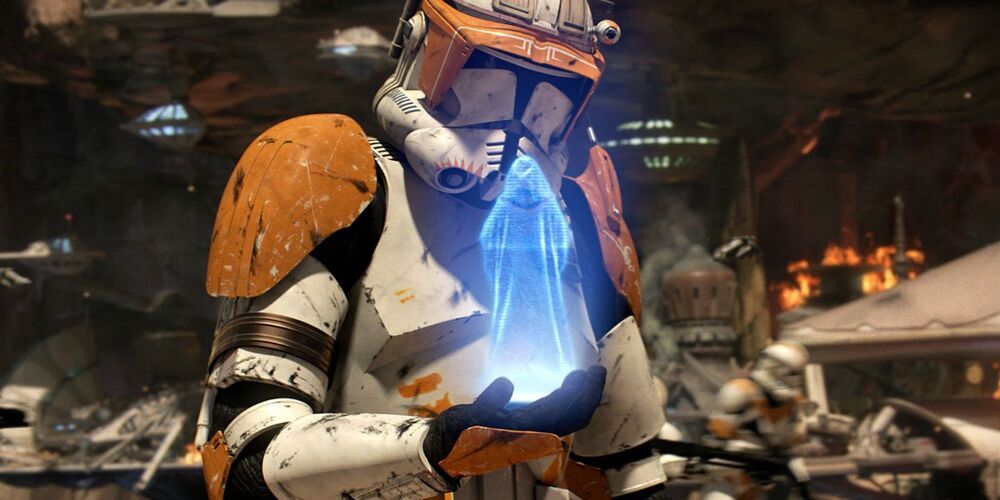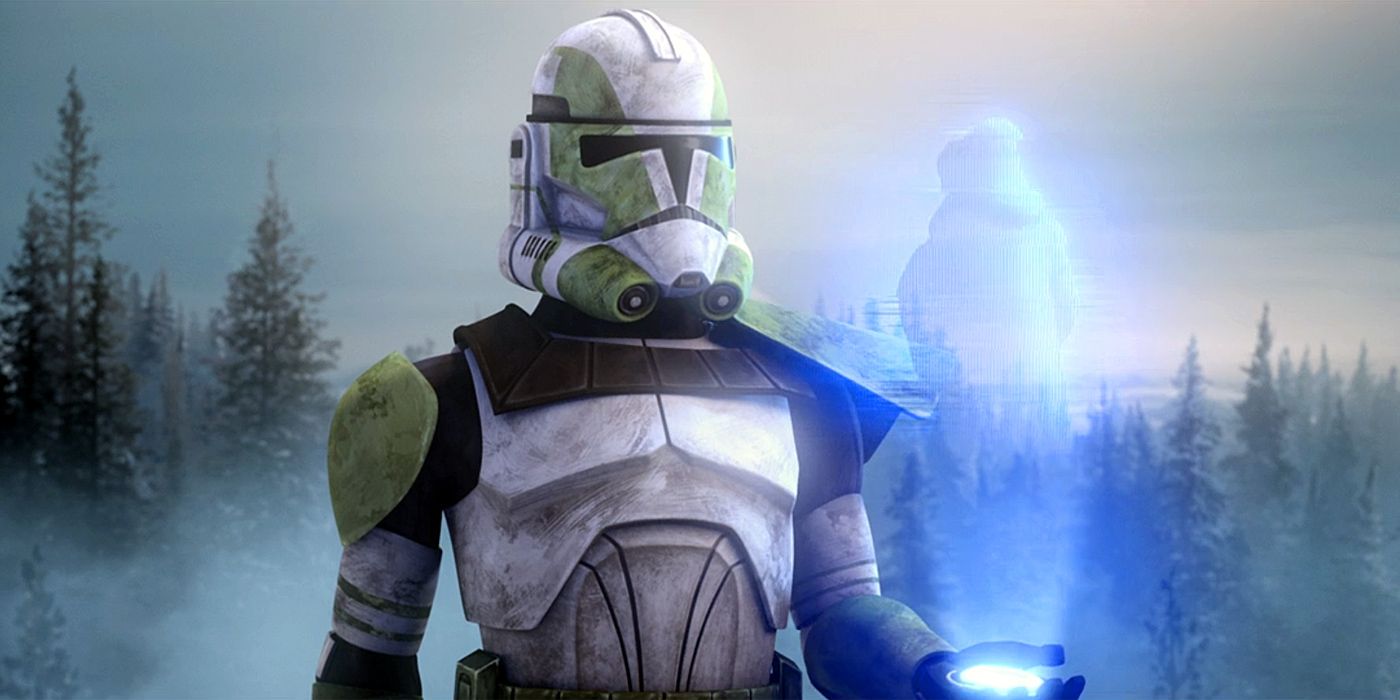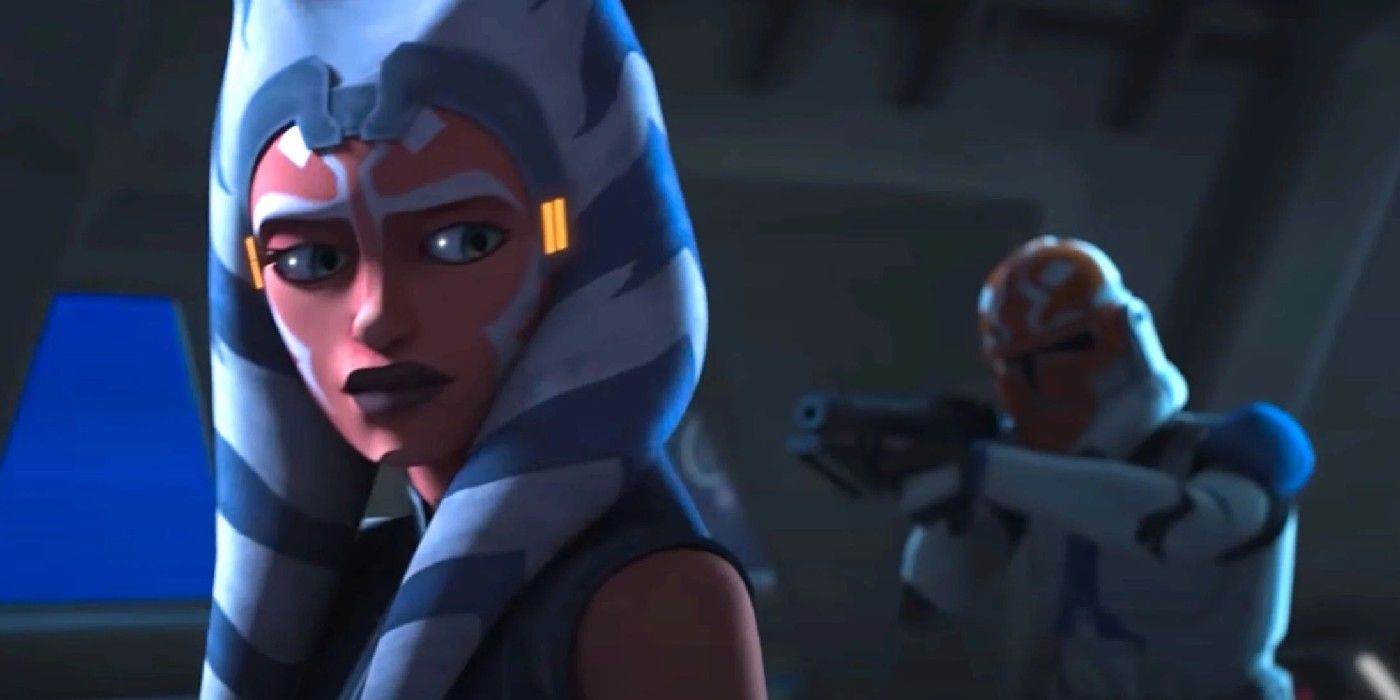WARNING: The following contains spoilers for Star Wars: The Bad Batch Season 1, Episode 1, "Aftermath," which is streaming on Disney+.
Star Wars has not been shy about the horrors of Palpatine's infamous Order 66, which activated the clones' inhibitor chips and forced them to systematically execute almost all of the Jedi. When audiences first heard those words uttered in Star Wars: Episode III - Revenge of the Sith, a montage of Jedi murders flooded the screen and collectively broke hearts, from watching the brutal death of Aayla Secura to seeing Anakin prepare to slaughter younglings.
With the premiere episode of Star Wars: The Bad Batch, audiences were forced to watch Order 66 for a third time on-screen, following Revenge of the Sith and the end of Star Wars: The Clone Wars. For those who've played the Jedi: Fallen Order game, it was the fourth time. Each reliving reveals new perspectives, shows new character fates and helps shape the first days of the Empire into a new context. But it also hurts every time.
Even though everyone knows that by the time of Star War: Episode IV - A New Hope, the Jedi are long gone and little more than a myth, actually seeing their execution for the first time in Revenge of the Sith brought a whole new perspective. The montage of deaths, including Plo Koon, Ki-Adi-Mundi, younglings and more, set to John Williams' haunting "Anakin's Betrayal," hit especially hard. These were Jedi the audience had come to know and love, and even knowing that Anakin was destined to turn on them, that scene was the first to show just how swift and brutal the end of the Jedi truly was.
Order 66's second on-screen appearance in The Clone Wars brought a new level of pain. Throughout the seven years of storytelling in Clone Wars, the clones themselves were humanized well beyond what the movies could do. They were given distinct personalities, formed close relationships with the Jedi, who they considered not only compatriots but friends, and explored character arcs and growth themselves. Because of these added dimensions, the flipping of their chip switches was especially heartbreaking. The sense of betrayal was made more realistic and seeing longtime friends, Rex and Ahsoka, suddenly in a life or death match against each other was horrific.
In fact, Clone Wars set the stage to be all the more upsetting, as Ahsoka's return to fight alongside the Jedi and the clones was still fresh. Many members of the 501st were proudly wearing helmets painted in Ahsoka's markings when they all turned on her, so they bore physical marks of that betrayal. Ahsoka was able to save Rex and remove his chip, but the two still had to face the legion of other clones programmed to now hunt and destroy the former Jedi. Though they escaped, the rest of the clones died upon crashing into the planet below. Ahsoka's final moments on-screen in Clone Wars showed her looking upon the graves of the troopers as she symbolically dropped her lightsaber into the snow. That instance of Order 66 carried the weight of multitudes of finalities.
Finally, with the May the Fourth release of the premiere episode of The Bad Batch, the latest showing of Order 66 arrived. The entire series, in fact, opened up just moments before the Order was called. On Kaller, the clones were fighting alongside Jedi Depa Billaba when the Bad Batch themselves showed up to save the day. Moments later, Order 66 was initiated, and not only did Depa Billaba die, but those opening minutes contextualized Caleb Dume's (soon to be Kanan Jarrus in Star Wars Rebels) experience with Order 66, watching his master die in front of him as a Padawan and then having to outrun and escape the clones, his former allies. That viewpoint of Order 66 was especially rough because it forced the audience to see the tragic backstory of an already beloved Rebels main character.
And because Clone Wars, Rebels and Bad Batch creator Dave Filoni and many other Star Wars writers clearly have a track record of weaving the horrors of Order 66 into their stories, this most likely is not the last time audiences will have to relive the pain. There is plenty of potential for live-action flashbacks with the upcoming Ahsoka and Obi-Wan Kenobi shows. In fact, with Hayden Christensen confirmed to return to his role as Anakin in Obi-Wan Kenobi, it only makes sense for another Order 66 point of view to be shown. There is even potential for story-illuminating Order 66 flashbacks in the upcoming Andor show, which will no doubt highlight the fall of the Republic and the early days of the Empire.
While it is always important to show this key moment in Star Wars history from varying points across the galaxy, one of the tragedies at the heart of Star Wars remains in the path of "what ifs." What if Anakin had been able to let go of the past? What if Qui-Gon had survived? What if Ahsoka had returned to the Jedi Order? With every iteration of Order 66, the possible futures of all those "what ifs" die time and again, making this tragedy all the more devastating.



